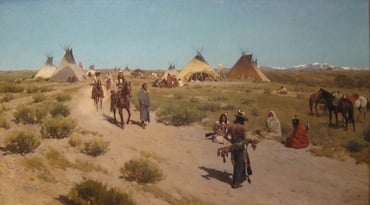1
约但河西,住山地、高原,并对着利巴嫩山沿大海一带的诸王,就是赫人、亚摩利人、迦南人、比利洗人、希未人、耶布斯人的诸王,听见这事,
4
就设诡计,假充使者,拿旧口袋和破裂缝补的旧皮酒袋驮在驴上,
5
将补过的旧鞋穿在脚上,把旧衣服穿在身上;他们所带的饼都是乾的,长了霉了。
6
他们到吉甲营中见约书亚,对他和以色列人说:我们是从远方来的,现在求你与我们立约。
7
以色列人对这些希未人说:只怕你们是住在我们中间的;若是这样,怎能和你们立约呢?
8
他们对约书亚说:我们是你的仆人。约书亚问他们说:你们是甚麽人?是从那里来的?
9
他们回答说:仆人从极远之地而来,是因听见耶和华─你神的名声和他在埃及所行的一切事,
10
并他向约但河东的两个亚摩利王,就是希实本王西宏和在亚斯他录的巴珊王噩一切所行的事。
11
我们的长老和我们那地的一切居民对我们说:你们手里要带着路上用的食物去迎接以色列人,对他们说:我们是你们的仆人;现在求你们与我们立约。
12
我们出来要往你们这里来的日子,从家里带出来的这饼还是热的;看哪,现在都乾了,长了霉了。
13
这皮酒袋,我们盛酒的时候还是新的;看哪,现在已经破裂。我们这衣服和鞋,因为道路甚远,也都穿旧了。
15
於是约书亚与他们讲和,与他们立约,容他们活着;会众的首领也向他们起誓。
16
以色列人与他们立约之後,过了三天才听见他们是近邻,住在以色列人中间的。
17
以色列人起行,第三天到了他们的城邑,就是基遍、基非拉、比录、基列耶琳。
18
因为会众的首领已经指着耶和华─以色列的神向他们起誓,所以以色列人不击杀他们;全会众就向首领发怨言。
19
众首领对全会众说:我们已经指着耶和华─以色列的神向他们起誓,现在我们不能害他们。
20
我们要如此待他们,容他们活着,免得有忿怒因我们所起的誓临到我们身上。
21
首领又对会众说:要容他们活着。於是他们为全会众作了劈柴挑水的人,正如首领对他们所说的话。
22
约书亚召了他们来,对他们说:为甚麽欺哄我们说我们离你们甚远呢?其实你们是住在我们中间。
23
现在你们是被咒诅的!你们中间的人必断不了作奴仆,为我神的殿作劈柴挑水的人。
24
他们回答约书亚说:因为有人实在告诉你的仆人,耶和华─你的神曾吩咐他的仆人摩西,把这全地赐给你们,并在你们面前灭绝这地的一切居民,所以我们为你们的缘故甚怕丧命,就行了这事。
25
现在我们在你手中,你以怎样待我们为善为正,就怎样做罢!







